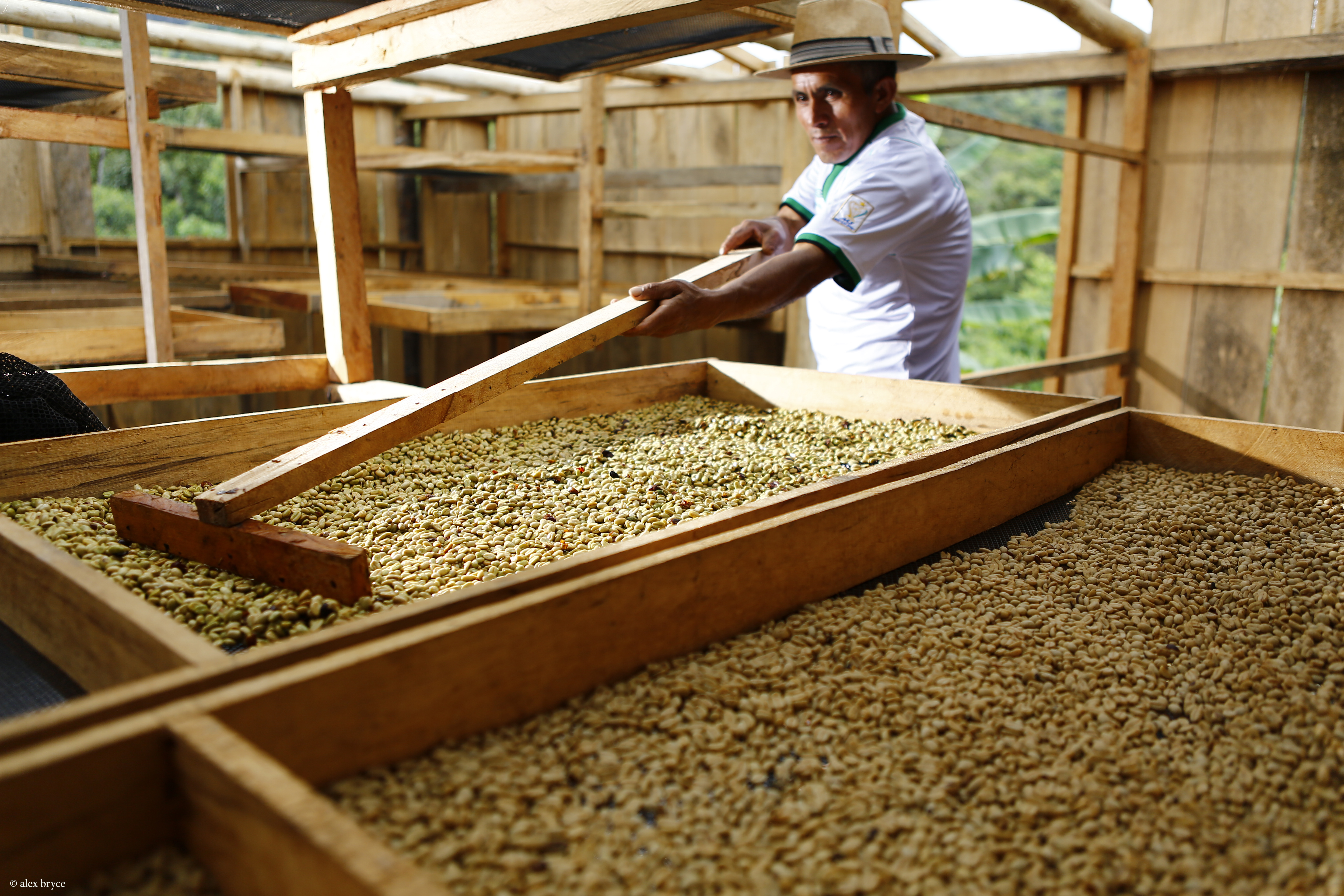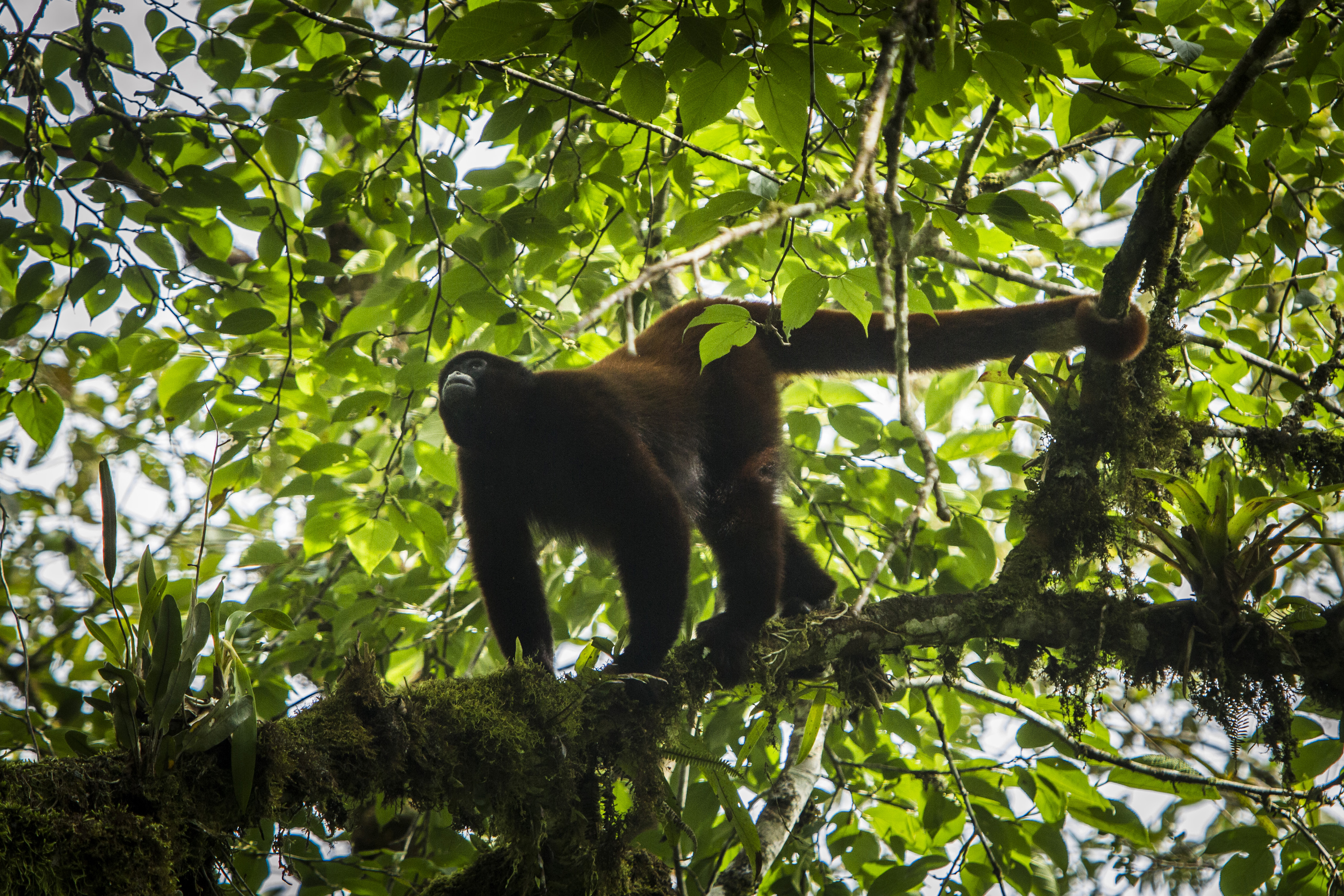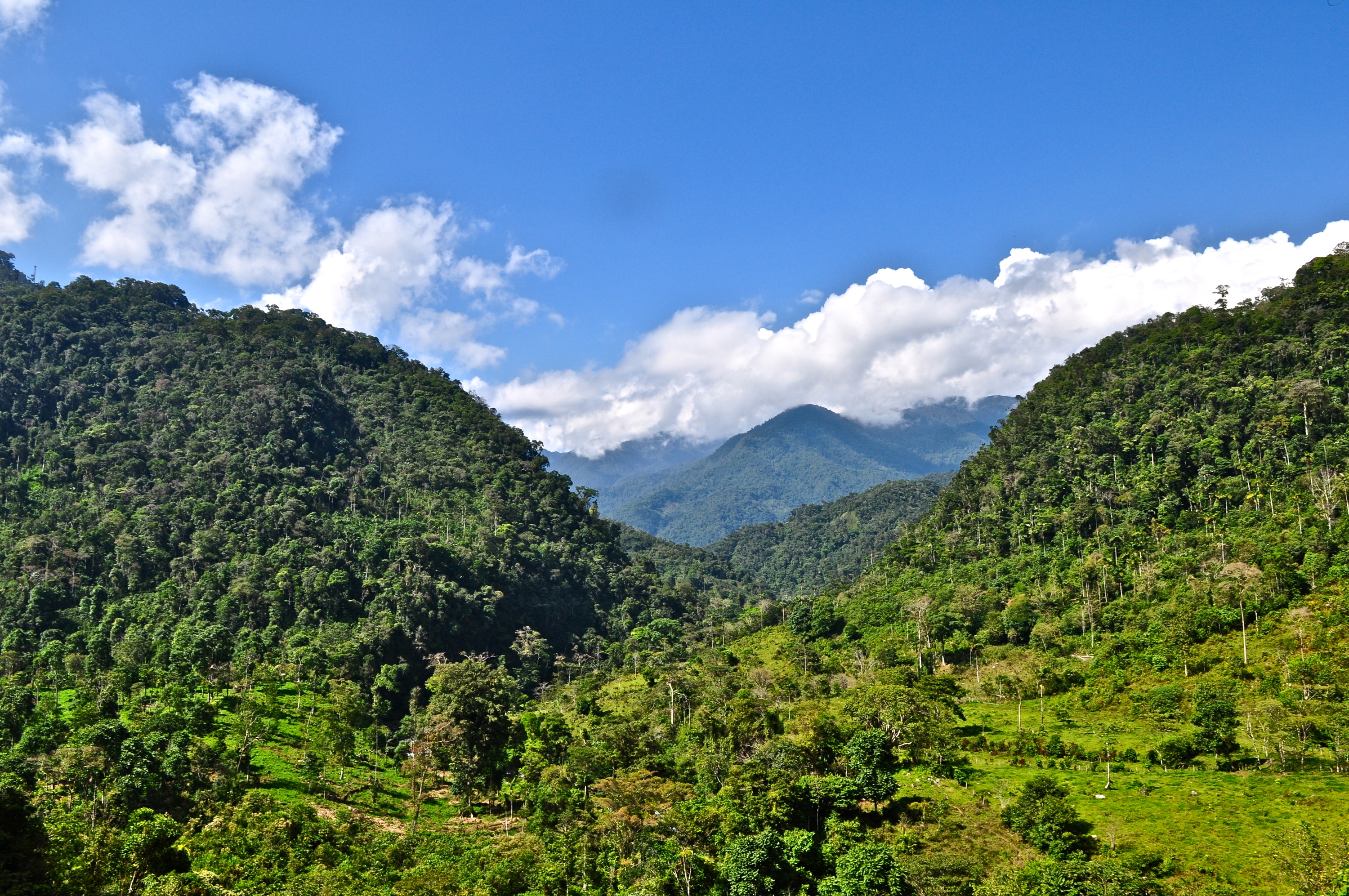To prevent irreversible damage to the climate that sustains us, humanity must reduce climate-warming greenhouse gases and remove excess carbon from the atmosphere. But even if the world immediately stopped using fossil fuels, we would fail to avert a disastrous climate scenario unless we also reverse the destruction of ecosystems that absorb and store carbon.
In other words: If we don’t protect and restore nature, we won’t save the climate.
The facts
Natural climate solutions are at the heart of Conservation International’s work. These are actions that conserve, restore or improve the use or management of ecosystems while maintaining their capacity to absorb and store carbon from the atmosphere. These solutions also provide a host of additional benefits — filtering fresh water, providing breathable air — that other approaches to climate change don’t offer.
Even better: Nature can do this today — cost-effectively, and at the massive scale required.
Our Work
Our strategy focuses on ensuring that natural ecosystems are worth more alive than dead. Deforestation rates have climbed in recent years — with short-term economic interests outweighing the long-term value of forests. Conservation International’s work aims to replace an extractive economy with a regenerative one through innovation, collaboration and by partnering with Indigenous peoples and local communities.

Working with businesses and governments to minimize deforestation by addressing its largest drivers, particularly agricultural expansion.

Identifying and mapping high-carbon ecosystems such as mangroves, tropical peatlands and old-growth tropical forests that, once lost, are extraordinarily difficult to replace.

Guiding public and private investments to initiatives such as REDD+ (Reducing Emissions from Deforestation and forest Degradation), a UN-backed approach to fight climate change by conserving forests.

Developing methods to increase the return on investment in tropical reforestation, making it more attractive for governments and private investors.

Supporting local and Indigenous communities to protect forests on their lands.

Mainstreaming and maximizing nature’s role for achieving climate goals in national and international climate actions.
Principles for Investments in Natural Climate Solutions
Nature is one of the most effective ways to stop climate breakdown, yet natural climate solutions receive less than 3 percent of all global climate funding. Conservation International’s Principles for Investments in Natural Climate Solutions guide our engagement with companies that are helping to protect ecosystems that store climate-warming carbon from the atmosphere.
Irrecoverable Carbon
To avoid the catastrophic consequences of climate breakdown, there are certain places that humanity simply cannot afford to destroy. These ecosystems contain more than 260 billion tons of “irrecoverable carbon,” most of which is stored in mangroves, peatlands, old-growth forests and marshes. If released, these vast stores of living carbon would be impossible to recover by the middle of the century, which is when the world needs to reach net-zero emissions to avoid a climate disaster.
Conservation International scientists are leading a team of globally renowned experts to determine where these carbon stocks are, whether they are threatened by human activities and how quickly the stocks could be recovered if lost — creating a global map of irrecoverable carbon in Earth’s ecosystems.
Informed by this pioneering research, Conservation International is undertaking an ambitious initiative to protect 280 million hectares (nearly 700 million acres) of ecosystems — an area larger than Argentina — containing high amounts of irrecoverable carbon by 2030.
MORE THAN 30%
Protecting and restoring tropical forests can make up at least 30 percent of the solution to the climate crisis. But forest-protection efforts receive only 3 percent of global climate funding. Join the thousands of people who want to fix that.
In the field
Conservation International is hard at work
Related conservation news from the field
As pandemic pounded Peru, one region thrived on coffee, carbon
Editor’s note: View this post in Spanish here.
This post was updated on May 5, 2021.
Across Peru, the COVID-19 pandemic has left millions without jobs — battering the economy, draining public coffers and buffeting high-grossing industries, from mining to tourism.
But in the Alto Mayo Protected Forest, where the Amazon meets the Andes, coffee farmers were spared much of the economic devastation that gripped Peru’s cities and towns.
In fact, farmers in the remote forest had a banner year, exporting 336 tons of organic and fair-trade coffee to Europe, New Zealand and the United States in 2020 — fully one-third more than the previous year.
“We never stopped working, even with all the disruptions,” said Gricerio Carrasco, a leader of the 460-member Cooperative of Producers of the Alto Mayo Forest (COOPBAM). “There were orders to fill, and we didn’t want to disappoint our buyers.”
Carrasco and other farmers were buoyed by a longstanding United Nations-backed program known as REDD+, which offers financial incentives for communities, regions and countries to keep forests intact and prevent climate-warming carbon emissions caused by deforestation.

Members of the Cooperative of Producers of the Alto Mayo Forest (COOPBAM) commit to zero net deforestation.
Supported by Conservation International, in partnership with local communities and the Peruvian government, the Alto Mayo REDD+ initiative uses proceeds from the sale of carbon credits to finance voluntary conservation agreements. The pacts aim to galvanize community support. They provide coffee growers living in the protected forest with agricultural training, financial skills and access to specialty-grade coffee markets. In exchange, the farmers commit to zero net deforestation.
During the pandemic, funds from the carbon credits provided a lifeline for conservation — and the families who live in the forest.
“Situations like Covid highlight the importance of this type of financing mechanism,” said Conservation International’s Braulio Andrade, who has managed the Alto Mayo REDD+ project for the past decade.
“The carbon credits provide financial stability, which allows families in this area to be much more resilient,” he added. “Without this support, people might have had to turn to illicit activities, like selling rare forest plants or orchids, as they did in other areas.”
Stopping the cycle of deforestation
Located in the San Martín region of Peru, the Alto Mayo Protected Forest spans 182,000 hectares (450,000 acres) — an area twice the size of New York City. The tropical forest is home to endangered animals and plants, and protects streams that supply water to 265,000 people in the Alto Mayo basin.

The Alto Mayo Protected Forest is home to Peru’s largest primate, the critically endangered yellow-tailed woolly monkey.
Despite its protected status, the forest saw some of the highest deforestation rates in Peru, due largely to agricultural encroachment, unsustainable coffee farms and illegal logging.
To help stop this cycle, Conservation International and local partners sought to place an economic value on the forest’s services, recognizing its ability to mitigate climate change, supply fresh water and provide local communities with sustainable livelihoods.
In 2012, the REDD+ project in the Alto Mayo Protected Forest was successfully validated under the Verified Carbon Standard and Climate, Community and Biodiversity Standards through an independent audit. Over the past nine years, the project has generated US$ 38 million, channeling funds from carbon credits purchased by wealthy countries and corporate backers directly into this northern pocket of Peru.
“About 99.9 percent of the costs for managing this protected area come from REDD+,” Andrade said. “That’s everything from employing technical experts and social workers, who support the conservation agreements, to paying forest rangers’ salaries and buying the gasoline that powers their vehicles.”
As of June 2020, the project had helped cut deforestation in the protected area by more than half, avoiding 8.4 million metric tons of greenhouse gas emissions — the equivalent of taking 150,000 cars off the road each year.
Moreover, the sale of carbon credits supports the livelihoods of 1,100 families who have signed on to the conservation agreements. Through agriculture training programs, farmers have boosted coffee yields on land that was already cleared of trees, increasing their productivity — not their environmental footprint.
“Before, we planted coffee any which way we could. And we didn’t know how to commercialize it,” Carrasco said. “Now we’re sustainably producing high-quality beans that command a good price.”

The Alto Mayo Protected Forest spans 182,000 hectares (450,000 acres) — an area twice the size of New York City.
The conservation agreement model pioneered by Conservation International in Alto Mayo has been so successful that the Peruvian government implemented similar agreements in 35 other protected areas and recently incorporated them as a management tool within its system of national protected areas.
“The aim is to consolidate communities’ support for protected areas and help local families reap the benefits that conservation can provide,” said Marco Arenas, head of stakeholder engagement for Peru’s National Service of Natural Protected Areas. “Over the past decade, conservation agreements have been the key to success in the Alto Mayo Protected Forest. We are looking to build on that success by putting similar agreements in place in other critical ecosystems around the country.”
‘It’s as though we were reborn’
For Carrasco, the skills gained by engaging in Alto Mayo’s conservation have been life changing. The oldest of 10 siblings, he never had the opportunity to pursue higher education. But increasing coffee sales through the cooperative meant he was able to provide an education for his 20-year-old son, who graduated from college with a degree in environmental engineering.
On their farm, Carrasco and his family have diversified their crops to include yucca and plantains, ensuring steady income between coffee harvests. And now, the REDD+ project has engaged with a Peruvian company to buy dragon fruit from local farmers. Carrasco recently planted half a hectare of the local varietal, which fetches a good price. His latest enterprise is beekeeping, which he began with technical support and a few hives funded by REDD+ proceeds. As word of his honey has spread in the community, Carrasco has started selling to his neighbors, a few jars at a time.
“I feel proud of what I’ve accomplished here,” Carrasco said. “When we first arrived in Alto Mayo, we didn’t know what a protected area was or how to take care of it. With time, the conservation agreements have opened many doors for us. It’s as though we were reborn.”
Further reading
Vanessa Bauza is the editorial director at Conservation International. Want to read more stories like this? Sign up for email updates. Also, please consider supporting our critical work.
Related peer-reviewed science
Our Priorities
Principles that guide our work:
Leave a comment